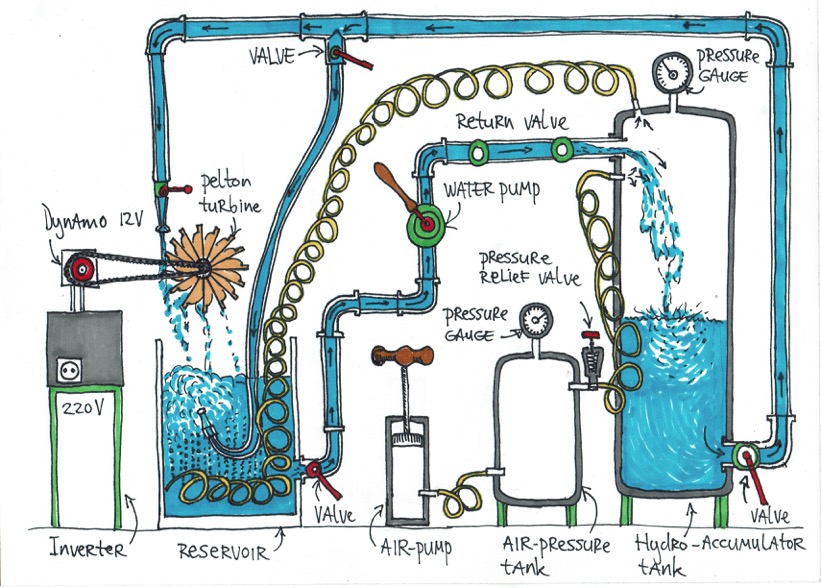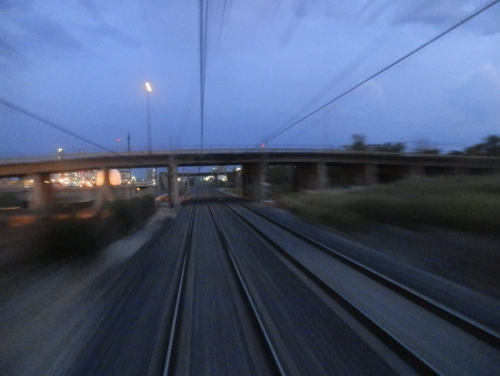- The Switch to Outdoor LED Lighting Has Completely Backfired. [Gizmodo]
- Too right it’s Black Friday: our relentless consumption is trashing the planet. [Monbiot]
- Automated checkouts ‘miserable’ for elderly shoppers. [BBC]
- Do Civilizations Collapse? [Aeon]
- ‘Our minds can be hijacked’: the tech insiders who fear a smartphone dystopia. [Guardian]
No Tech Reader #14
Prototype of a Hydro-Pneumatic Human Power Plant
The Human Power Plant is a working prototype of a muscular power generator, manned by a group of people. It is an all-round off-the-grid solution, which can supply energy in the form of electricity, water under pressure, and compressed air. It is built from simple and durable parts.
These days, we have automated and motorised even the smallest physical efforts. At the same time, we go to the gym to keep in shape, generating energy that’s wasted. The Human Power Plant restores the connection between physical exercise and energy use.
See and read more: The Hydro-Pneumatic Human Power Plant: How it Works. Drawing: Melle Smets.
Restore the Night Trains in Europe
The French passenger association “Oui au train de nuit” (“Night trains yes!”) has compiled a report about European night trains: “Put the night trains back on track“. During the last five years, most of Europe’s night trains have disappeared, although they are popular with travelers and the only alternative to the airplane.
* The report was brought to our attention by Back on Track, a European coalition that supports cross-border rail and brings the latest news about international passenger travel in Europe. * Previously: High speed trains are killing the European railway network. * Picture taken from the back window of the night train Madrid – PortBou in 2013.
Non-Electric Hearing Aids Outperform Modern Devices
Most people with hearing problems are not using hearing aids, mainly because the electronic devices often do not provide enough benefit. Research shows that non-electric hearing aids from earlier centuries are performing significantly better.
Digital Colonialism
 Free Basics, Facebook’s free, limited internet service for developing markets, is neither serving local needs nor achieving its objective of bringing people online for the first time.
Free Basics, Facebook’s free, limited internet service for developing markets, is neither serving local needs nor achieving its objective of bringing people online for the first time.
“Facebook is not introducing people to open internet where you can learn, create and build things,” said Ellery Biddle, advocacy director of Global Voices. “It’s building this little web that turns the user into a mostly passive consumer of mostly western corporate content. That’s digital colonialism.”
Read more: How Facebook’s free internet service has failed its users.
Previously: How to build a low-tech internet.








